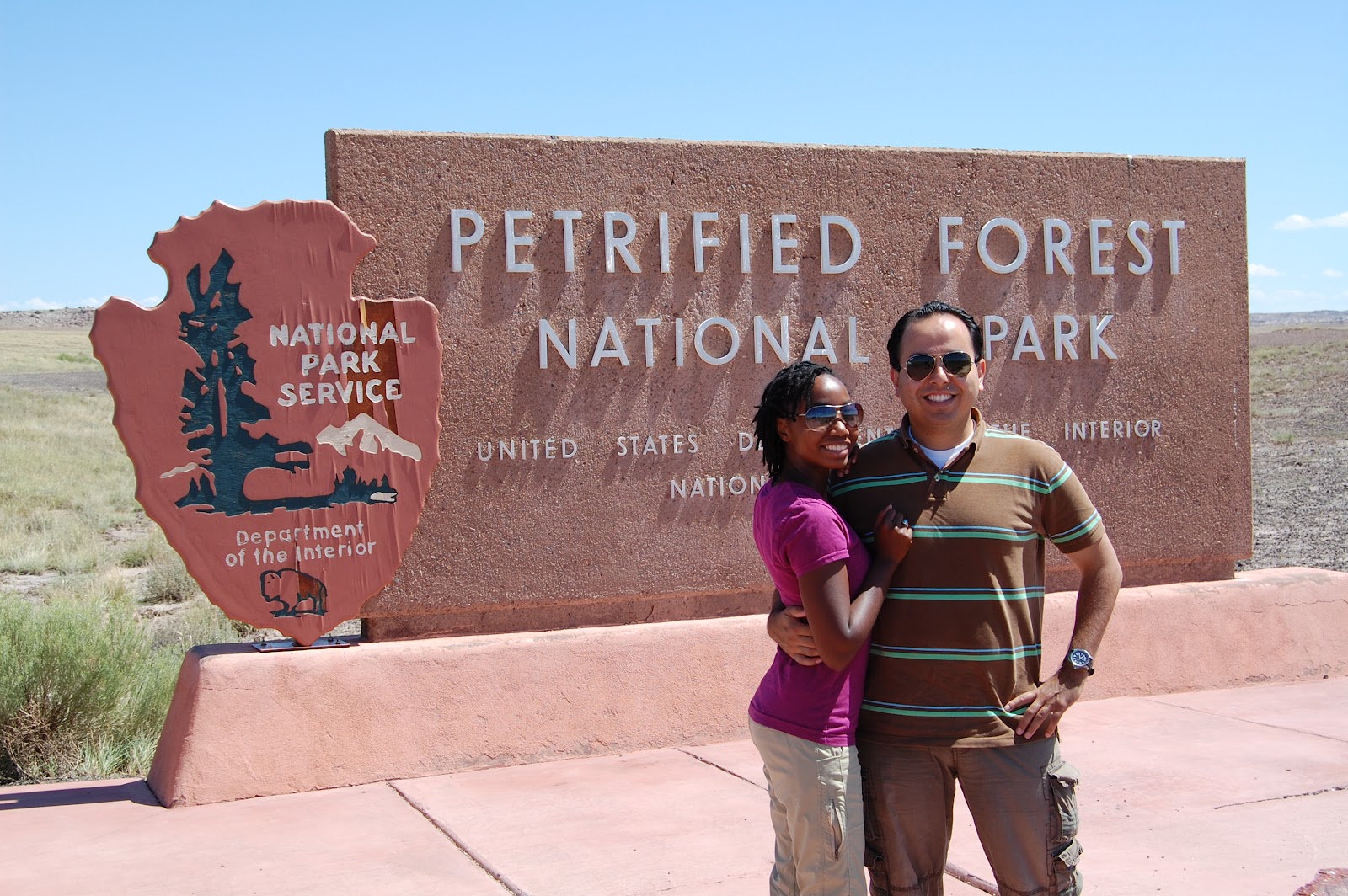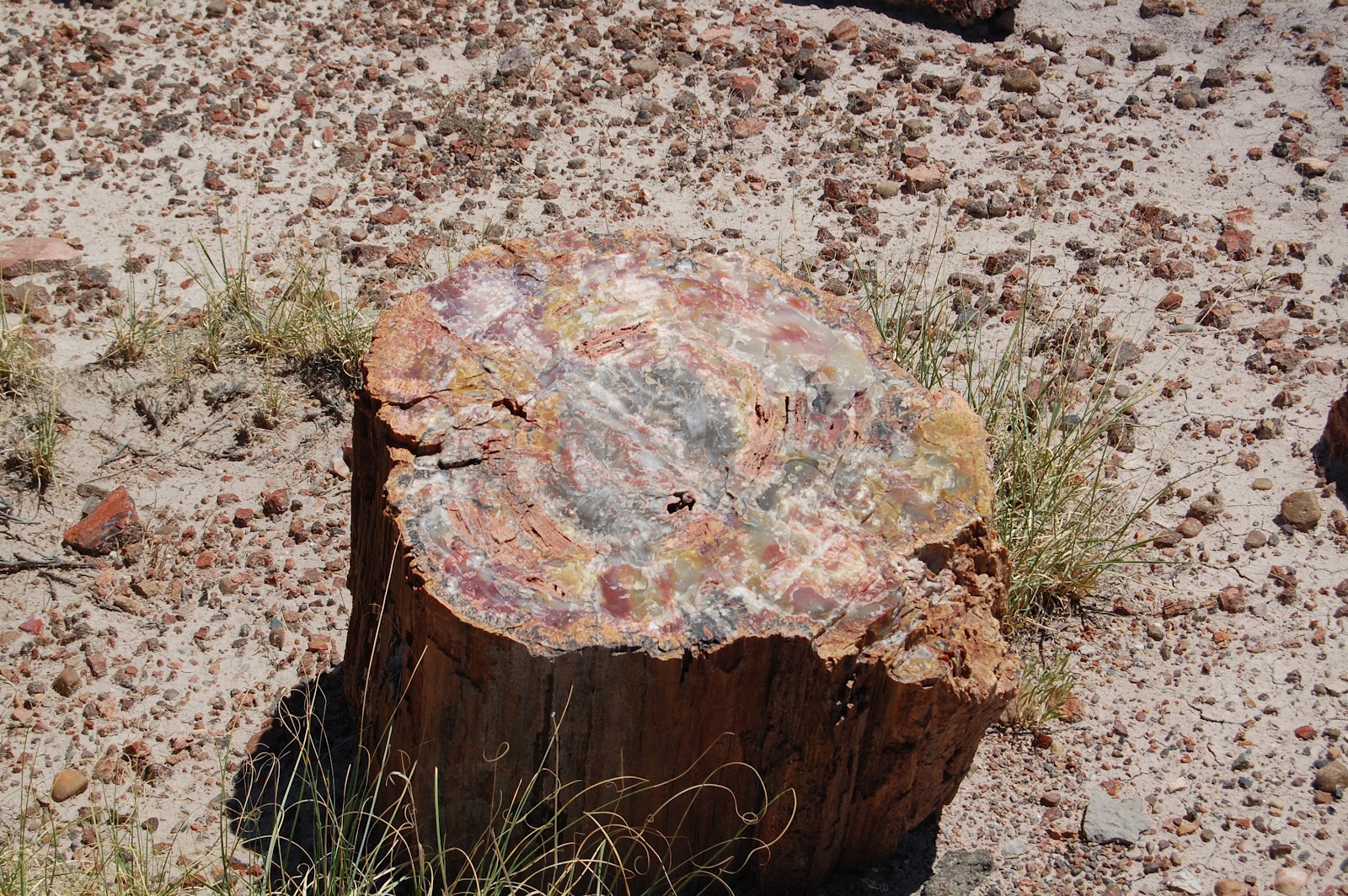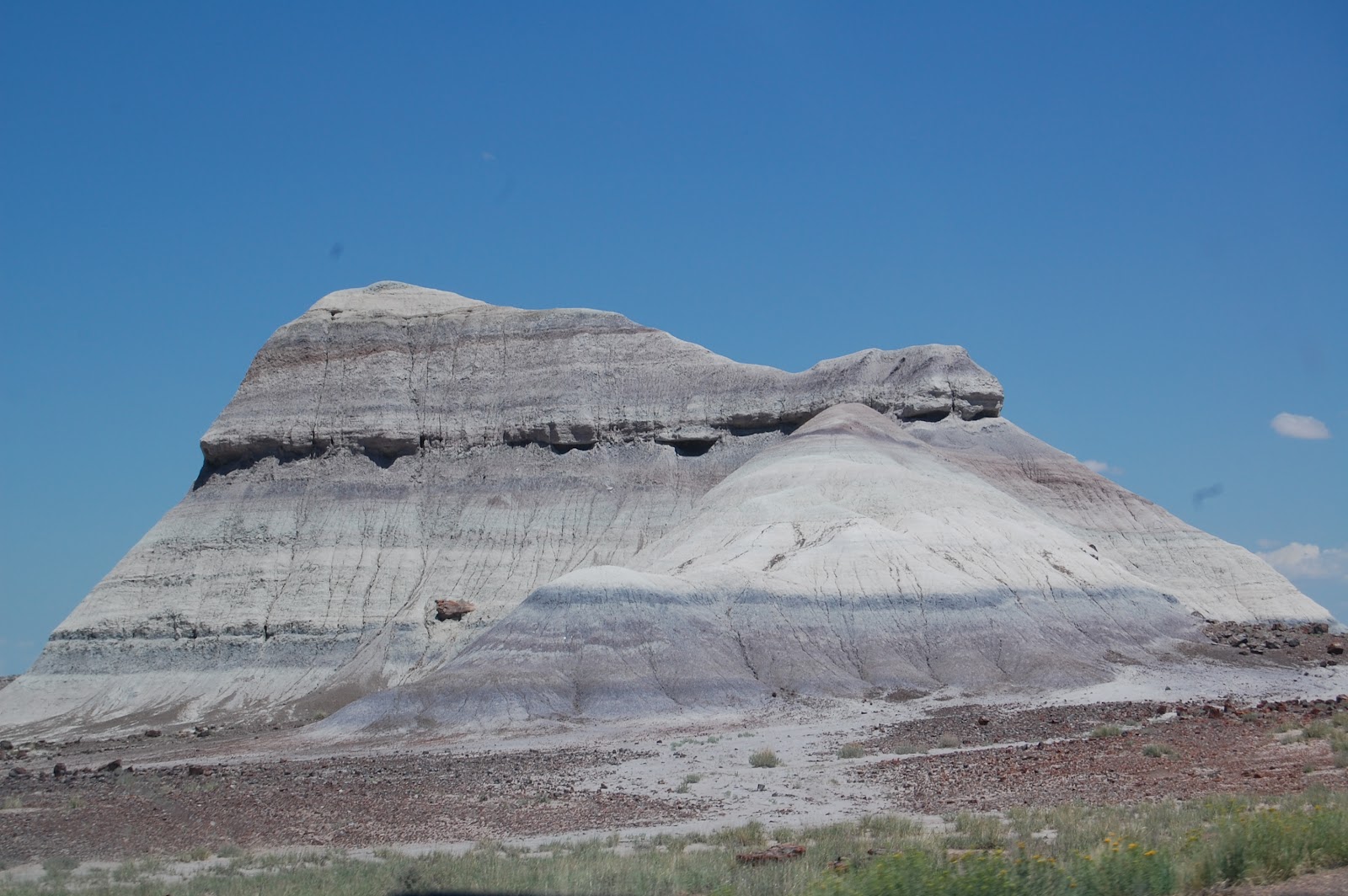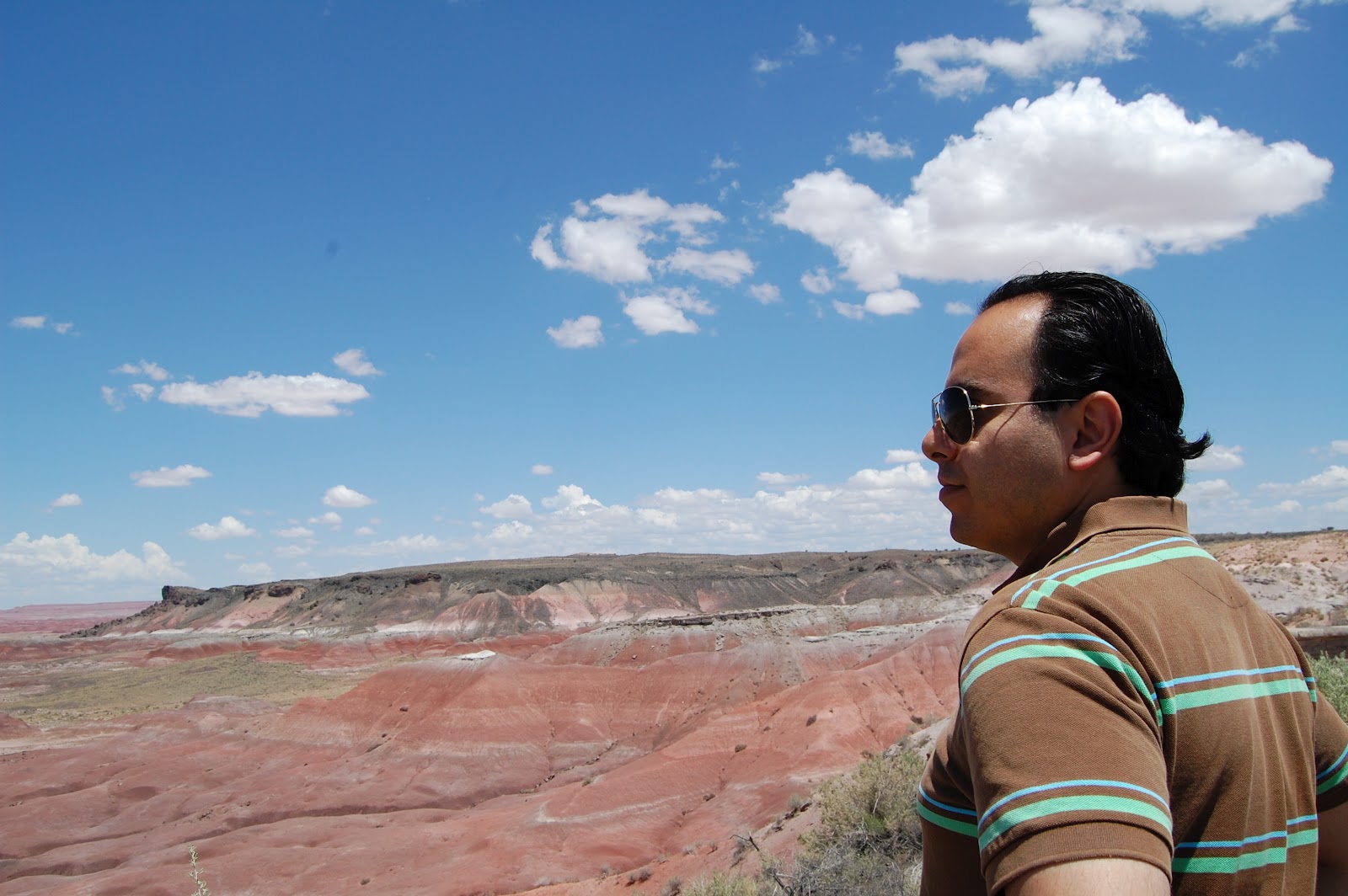My fiance and I took a trip to Phoenix, AZ in mid-July. Here’s a bit of what went down:
 |
| Our first stop of the tour. |
I’m not going to lie: the morning started off horribly. My fiancé and I planned to hike Camelback Mountain around 5am but only four hours of sleep got the best of us; he went back to sleep and I stared at the ceiling for an hour, which put me in a pissy mood (sorry, Babe!). I was a bit scared that this would be the suckiest day of our vacation, which would be horrible after leaving a less than divine experience in north Scottsdale.
After a quick breakfast at the hotel, my fiancé and I headed northbound towards anywhere. Truth is, neither of us knew which of the parks we wanted to see first but we knew the general direction that we needed to go. We decided upon the Petrified Forest, Painted Desert, and Meteor Crater. (Canyon de Chelly was also on the list but was ditched at the last minute. It is nearly eight hours from Phoenix.)
The drive to the Petrified Forest is absolutely stunning, particularly for a southeastern girl with limited access to desert and mountain landscapes. Close to Phoenix, the stark hills rise like hiccups from the terrain. Desert shrubs and succulents dot the land. As we progressed closer to Flagstaff, the cacti gave way to pine trees. The wind rustled tall grasses in the vast expanses of nothingness between the foothills. As exhausted as I was, I couldn’t sleep. I kept my face pressed against the glass with my future father-in-law’s camera clicking away.
Since I hadn’t planned on visiting the Petrified Forest, I expected all of the wrong things. I imagined that the landscape would change into more forested area as we breezed down route 180; somewhere along the lines a canyon would drop beneath us and inside—preserved by heat and obscurity—would be a forest of rock-solid trees rising from the depths of the canyon.
 |
| Beautiful colors within petrified wood. |
Wrong. The route 180 looks like rural Arkansas during a dust storm: hot, dry, and sunny with expanses of fields for miles and miles. Somewhere in the distance, gray mountains peeked over the horizon. A patch of greenery here and there signaled water. A few trees survived in these areas, along with a few residential compounds that looked like they were living off of the grid.
The entrance to the park pops up out of nowhere. Even after passing the sign, there are miles to drive before reaching the Petrified Forest’s information center and trails. The petrified trees have long since fallen and many have crumbled. Massive hunks remain, radiating various colors from within in a way that in intriguing and captivating. You don’t think looking at fallen trees would be cool until you’re actually doing it. Purples, reds, oranges, greens—the rings of the tree are obscured by glistening hunks of color that represent the presence of silica, manganese, carnotite, and cinnabar. The trees are almost fully quartz, so solid they can only be but with a diamond-tipped saw. It’s a bit mind-boggling. (I asked my fiancé how long he thought it would take human bones to petrified, if our composition permitted that at all. Seriously, I’d like my bones to be that awesome long after I’m gone.)
We only spent about 30 minutes at the Petrified Forest Welcome Center trails. I’d recommend spending more time. I believe that watching the video in the center will give you a better idea of how the trees were formed and what the environment looked like before when the trees were alive.
 |
| Blue hills towards the south of the park |
We hopped back into the rental car and made our way towards my favorite part of the park—the Painted Desert. We began in the low-lying hills and buttes with beautiful bands of blue, gray, and white. Those closest to the road rose no higher than fifty feet; they are low but often wide, providing stunning panoramic shots that my camera simply wasn’t prepared for. (I must go back with the proper equipment!) To the naked eye, though, the vistas are stunning.
And they only get better. As you progress towards I-40, the hills become larger mesas that plummet down into canyons, like miniature Grand Canyons that are equally stunning in color though less in scale. The rocks and sand are painted bands of red, orange, pink, amber, and white.
The region that we passed through is part of the Chinle Formation, a series of hills, buttes, and mesas that are composed of fluvial deposits. Researchers estimate that these lands were formed 200 million years ago when the region possessed wetlands. Rivers carved through the mudstone and sandstone to create the masses we see today. When nearby volcanoes erupted, they altered the normal composition of the sediment and mineral deposits, contributing to the bizarre bands of color. In short, the colors are bookmarkers for what was happening in the environment at the time.
 |
| My fiance at a lookout point in the northern red badlands |
I could’ve spent hours on that route, pulling over at all of the lookout points, snapping photos and simply absorbing the beauty of it all. Unfortunately, we were trying to cram in a lot in a little time so we drove through the badlands stopping only a few times.
Next stop: Meteor Crater!